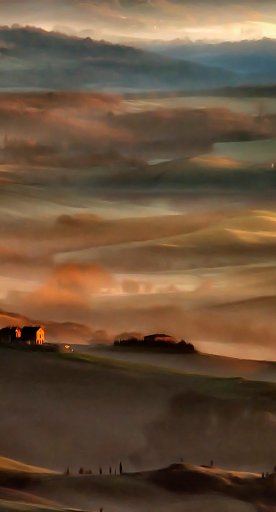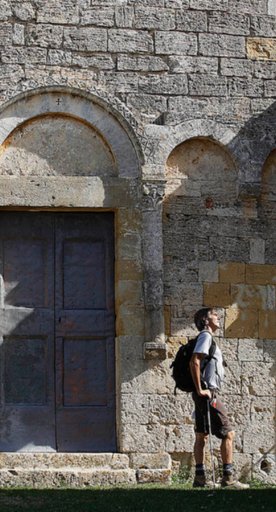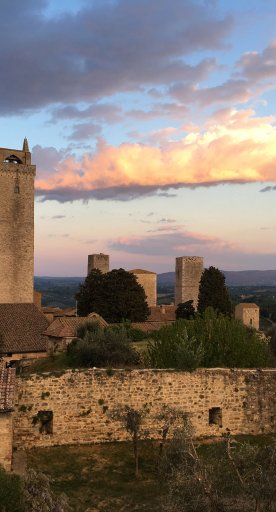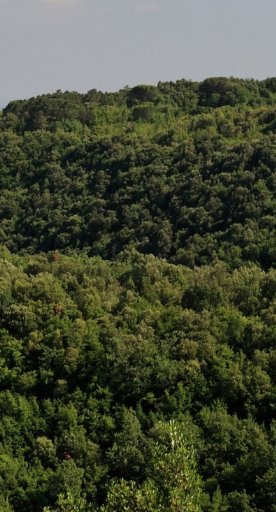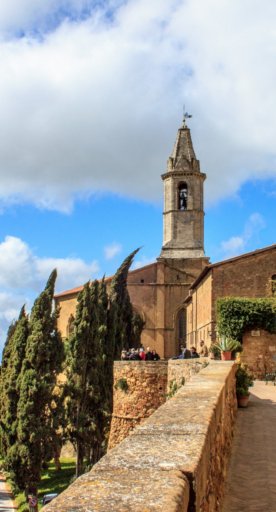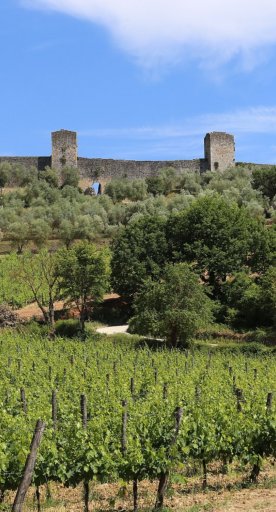
Radicofani
From the top one of the most spectacular fortresses in Tuscany
On a hill at the southern border of the Val d’Orcia sits Radicofani, one of the most spectacular fortresses in Tuscany which has been a hugely important stronghold in Italy for centuries.
The Fortress can be seen from dozens of miles away and seems to loom over the village with the grandeur of those who have controlled the border between the Grand Duchy of Tuscany and the Papal State for centuries.
Radicofani, a true village-road, is a jewel just waiting to be discovered and has received the Orange Flag from the Touring Club.
What to see in Radicofani
The most interesting monument in the medieval village is the Romanesque Church of San Pietro, built in the 13th century, damaged during WWII and restored in 1946. Inside, with its low Gothic arches, you’ll find a splendid collection of Della Robbia terracottas and wooden statues, including the Madonna and Child by Francesco di Valdambrino.
Just behind the church is a piazza boasting a magnificent panoramic view of the south. On the main road is the Church of Sant’Agata, whose altar holds a large terracotta dossal by the Della Robbia workshop.
Palazzo Pretorio, an impressive monument that proudly displays various historic families’ stone coats of arms, is also well worth a visit.
In the Maccione Gardens is a statue dedicated to Ghino di Tacco, a figure remembered as the Robin Hood of Val d’Orcia who used to live in the impregnable Fortress of Radicofani.
The Fortress is today home to the Cassero Museum, where it keeps archeological treasures found in this area. We strongly recommend you climb right to the top of the fortress, where you’ll be able to admire an incredible view that stretches across the whole Val d’Orcia.
On the historic Via Cassia is the Palazzo della Posta, a beautiful Medici villa which has long been transformed into a customs house and has hosted many illustrious travelers.
The most interesting monument in the medieval village is the Romanesque Church of San Pietro, built in the 13th century, damaged during WWII and restored in 1946. Inside, with its low Gothic arches, you’ll find a splendid collection of Della Robbia terracottas and wooden statues, including the Madonna and Child by Francesco di Valdambrino.
Just behind the church is a piazza boasting a magnificent panoramic view of the south. On the main road is the Church of Sant’Agata, whose altar holds a large terracotta dossal by the Della Robbia workshop.
Palazzo Pretorio, an impressive monument that proudly displays various historic families’ stone coats of arms, is also well worth a visit.
In the Maccione Gardens is a statue dedicated to Ghino di Tacco, a figure remembered as the Robin Hood of Val d’Orcia who used to live in the impregnable Fortress of Radicofani.
The Fortress is today home to the Cassero Museum, where it keeps archeological treasures found in this area. We strongly recommend you climb right to the top of the fortress, where you’ll be able to admire an incredible view that stretches across the whole Val d’Orcia.
On the historic Via Cassia is the Palazzo della Posta, a beautiful Medici villa which has long been transformed into a customs house and has hosted many illustrious travelers.
Nearby
Follow a winding road through the ravines and you’ll arrive at the medieval village of Contignano. Before arriving, take a second to stop for a walk in the Isabella Woods, a fascinating garden built by the Luchini family at the end of the 19th century. Odoardo Luchini, a great connoisseur of botanical sciences, personally oversaw the planting of plants from various parts of the world and dedicated the garden to his wife.
Via Francigena passes through the village, both in Leg 36 going from San Quirico d’Orcia to Radicofani and in Leg 37 going to Acquapendente, the final leg in Tuscany before Lazio.
Follow a winding road through the ravines and you’ll arrive at the medieval village of Contignano. Before arriving, take a second to stop for a walk in the Isabella Woods, a fascinating garden built by the Luchini family at the end of the 19th century. Odoardo Luchini, a great connoisseur of botanical sciences, personally oversaw the planting of plants from various parts of the world and dedicated the garden to his wife.
Via Francigena passes through the village, both in Leg 36 going from San Quirico d’Orcia to Radicofani and in Leg 37 going to Acquapendente, the final leg in Tuscany before Lazio.
Events
Val d’Orcia’s culinary traditions revolve around the home, which is why the Raviolo Festival is celebrated in Contignano during August.
In September, the Palio del Bigonzo takes place, a medieval festival held in the village of Radicofani. The four districts compete with the ‘bigonzi’ (historic containers for carrying eggs) and run through the village streets to reach the Piazza San Pietro, where the winner is declared.
Val d’Orcia’s culinary traditions revolve around the home, which is why the Raviolo Festival is celebrated in Contignano during August.
In September, the Palio del Bigonzo takes place, a medieval festival held in the village of Radicofani. The four districts compete with the ‘bigonzi’ (historic containers for carrying eggs) and run through the village streets to reach the Piazza San Pietro, where the winner is declared.
Local products
Val d’Orcia has always treasured its land, its agricultural excellence testifying to the inhabitants’ passion and care for the area. The numerous certifications are proof of how its values have made this valley famous all over the world for the way its products are protected.
The star of the show is the area’s wine production, with Brunello DOCG and DOC Orcia. Excellent extra virgin olive oil is also produced, as are cereal crops, honey, saffron and much more, all with unforgettable colours, aromas and flavours.
Val d’Orcia has always treasured its land, its agricultural excellence testifying to the inhabitants’ passion and care for the area. The numerous certifications are proof of how its values have made this valley famous all over the world for the way its products are protected.
The star of the show is the area’s wine production, with Brunello DOCG and DOC Orcia. Excellent extra virgin olive oil is also produced, as are cereal crops, honey, saffron and much more, all with unforgettable colours, aromas and flavours.
What’s nearby?
Val d’Orcia




